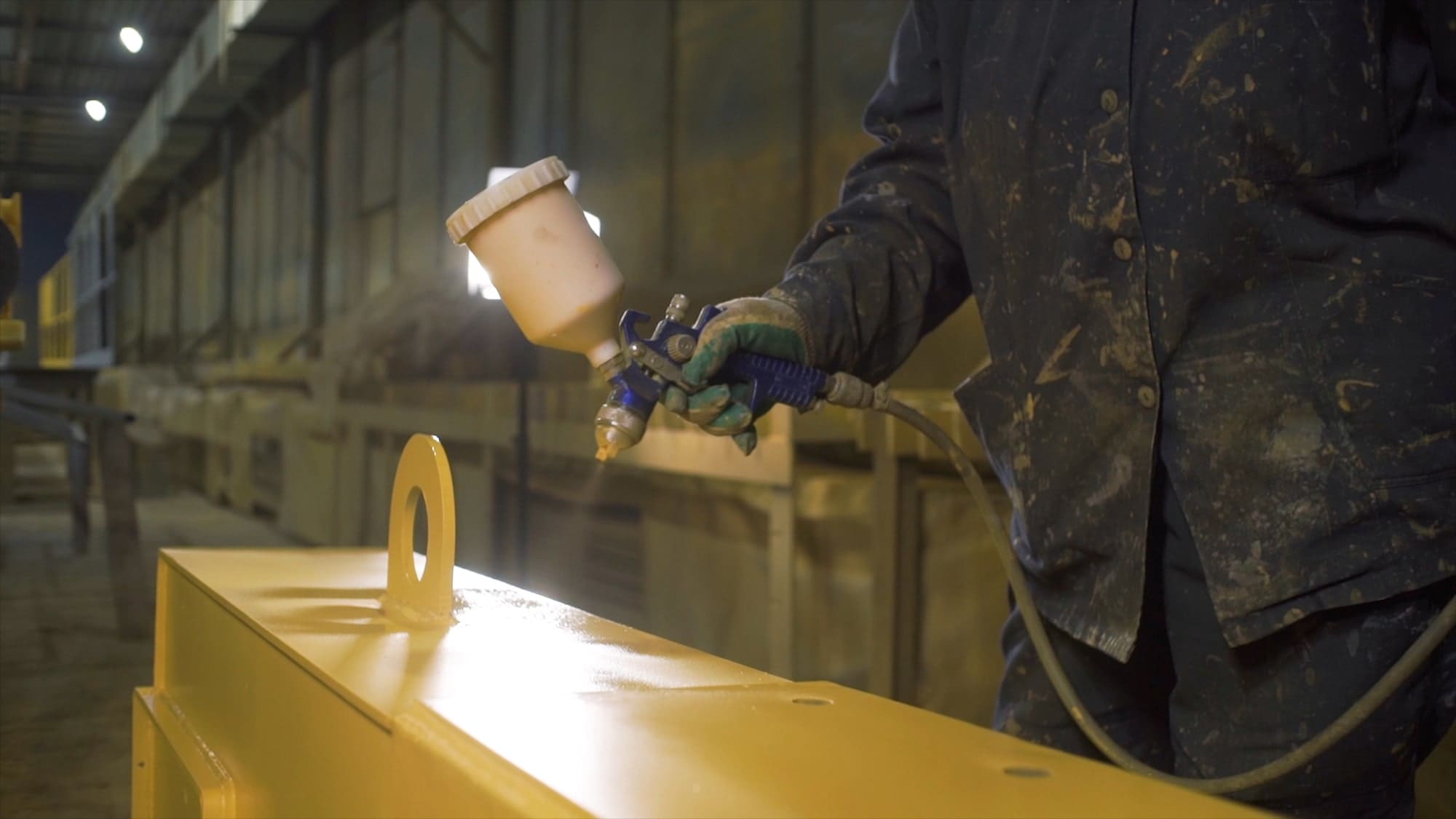Or maybe a homeowner wants a set of red enamelled dishes for the kitchen and a green garage door outside. In other words: they need colour.
Sometimes, this is not just a whim, but a requirement for the long and reliable service of products made not only from stainless steel, but also other grades of steel. In this case, a quality paint job protects against corrosion, which can destroy the metal and shorten the service life of the products.
There are three necessary components for a metal product to serve a long time:
- the product itself
- the correct surface preparation
- the paint
If the surface is not properly prepared, corrosion can spread, causing even the highest-quality paints to quickly begin to flake off the metal base.
To choose a surface preparation method before painting, you first need to assess its condition. Surface classification is described in ISO 8501 and GOST 9.402. They divide surfaces into four classes: А, B, C and D. In the first case, the surface of the steel product is covered with mill scale and has practically no rust. The fourth class means that there is corrosive pitting on the entire surface. The second and third are intermediate states in which rust has developed to differing degrees.
Based on this assessment, there are three primary steel cleaning methods recognised in the professional environment: mechanical, chemical and thermal.
ISO 8501-1 defines two main types of mechanical surface preparation:
- Sa – abrasive blast cleaning
- St – hand power mechanical tool cleaning
Processing steel using abrasive blasting (also known as sandblasting and shot blasting) is most effective when corrosion and old paintwork on metal surfaces are identified. Using this method, sand, steel shot or other abrasives are blown with air under high pressure onto the surface to be treated. When water is used instead of air, it is called hydro-abrasive cleaning. After the treatment, the surface of the product must be cleaned of dust residues and degreased.

Mechanical cleaning of steel with a hand tool (wire brushes or grinding discs) is used for small areas and/or products that do not require high-quality corrosion protection.
An oxygen-acetylene torch is used for gas-plasma (thermal) cleaning of a metal surface. Since this method cannot remove all the rust, it is rarely used for full surface cleaning today.
One of the most effective surface cleaning methods is chemical cleaning. When this method is applied, rust is removed using chemically active substances, which are divided into two categories: washable and indelible.
The former must be washed off the surface of the product with water after the end of the reaction, and then dried and covered with an anti-corrosion agent. The latter, which are called prime coat converters, do not need to be washed off, as they form a special protective layer. But this is not a true primer coating.
After the steel has been cleaned of rust and other contaminants, a primer coating must be applied. This is a special solution that protects the metal from corrosion and allows the paint to adhere to it better.
There are various types of primer coatings, including phosphating, passivating, insulating, inhibiting, protective and rust converters. Each of them has its own peculiar application. In general, they are used to preserve the saleable condition of semi-finished products until they are processed, as well as to increase the service life of finished products.

Only properly prepared products and structures should be painted. After all, in the case of steel, paint is not only a decorative element; it is part of the comprehensive protection against corrosion and premature failure.
So how are products painted on industrial scale?
This process is classified according to painting methods and types of coating composition.
The most popular painting method is application using a paint sprayer or nozzle. It can be airless, with air and combined. In the first case, paint is sprayed under high pressure onto the surface to be painted, literally driving into it. In the second case, the paint is mixed with air, which provides a smoother and more uniform layer. In the third version, air is added to the paint after it has left the spray gun.
In 1950, the powder coating method was invented. It is assisted by electricity and heat. First, the paint and product are charged with negative and positive high voltage charges, respectively. This attracts them to one another. The product is then heated up to 200-250°C, which causes the paint to spread into a thin, durable layer over the entire surface. While this method is a bit more expensive, it provides a higher-quality coating.
The most effective painting method is dipping or immersing the product in the paint. This ensures that the paint penetrates into even the furthest corners of irregularly shaped structures. Even the inner surfaces of hollow products can be painted. The drawbacks of this technology include uneven paint distribution and possible drips.
As for the types of paint, their choice depends on the material. When it comes to ferrous metals, oil paints and enamels are the best choices. For stainless steel, it is better to use alkyd enamel paints. It is preferable to coat non-ferrous metals with epoxy or polyurethane-based paints.
The preparation of products and structures for painting is a multi-level process with many important elements. With the correct approach, painted steel and metal products will serve for a long time and delight the eye not only with their metallic sheen, but also with all the colours of the rainbow.
